The revered poet and novelist Maya Angelou (1928-2014) has attracted growing attention for a job she briefly held as a teenager: streetcar conductor in San Francisco during World War II. Much of what gets tossed about in social media is untrue or only partly true. Here, we turn to her own words from her books and interviews to provide the fullest story possible and correct common misperceptions.
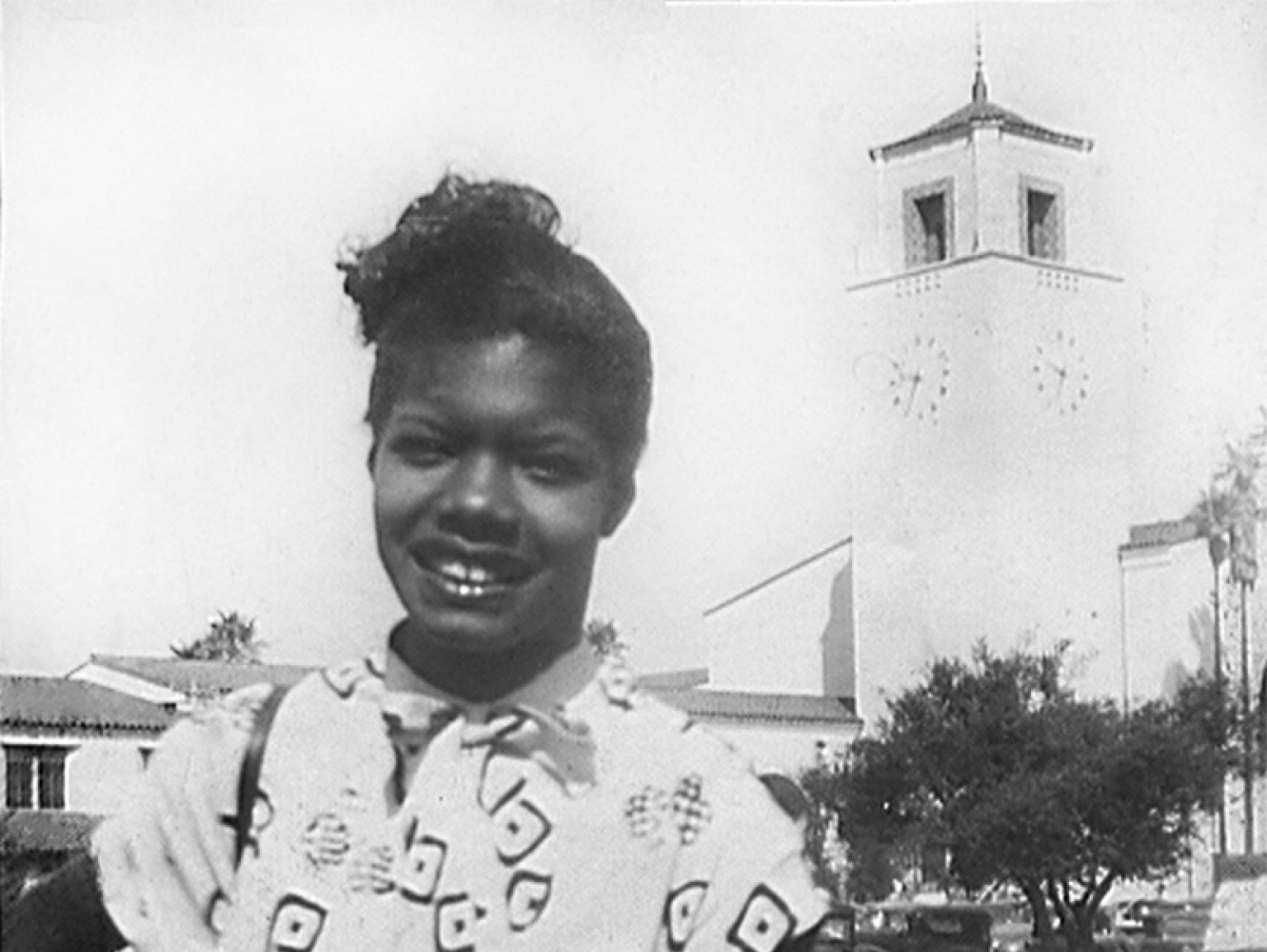
She was San Francisco’s first Black cable car operator, right?
Wrong. Maya Angelou was a conductor who worked on the back platform of electric streetcars, collecting fares and ensuring passenger safety. She worked for our nonprofit’s namesake, Market Street Railway Company, in its final year before being taken over by the city-owned Municipal Railway (Muni). Here’s how streetcars and cable cars are different.
Streetcars and cable cars both had two-person operating crews then. Conductors at the back, and motormen (on streetcars) and gripmen (on cable cars) piloting the car at the front. The jobs had different requirements. The first female streetcar motormen, dubbed “motorettes”, were hired by both Muni and Market Street Railway during World War II, as men holding those jobs were called to war. (The first Black female cable car “gripman” Fannie Mae Barnes, started gripping in 1998.)
Okay, but she was the first Black streetcar operator in San Francisco then?
She described herself as “the first Negro on the San Francisco streetcars” in her 1970 autobiography I Know Why the Caged Bird Sings”, but that distinction actually belongs to Audley Cole, who joined Muni in 1941 and endured severe harassment, but persevered.
She later said she had learned she wasn’t the first, but that she was the first Black female streetcar conductor in San Francisco. There’s no way to be sure because all employment records for both Muni and Market Street Railway were discarded long ago, but there’s no doubt that she was one of the first, and the story she tells about getting hired is so compelling in its courage and persistence.
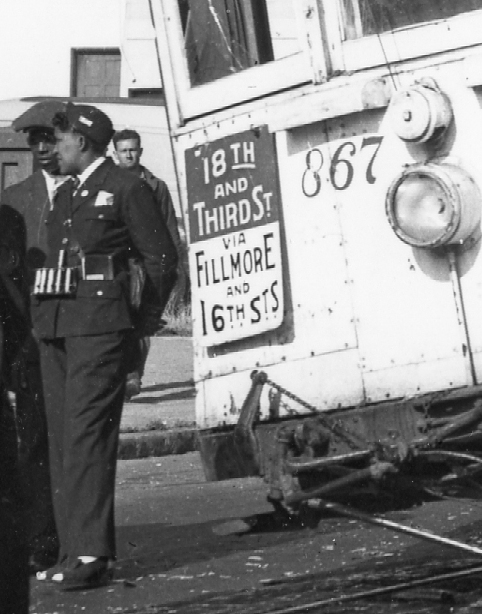
Why did she want to work on the streetcars?
In Caged Bird, she writes of deciding to take a semester off from George Washington High School in the fall of 1943, where she was a year ahead, and get work experience. War plants were out, she wrote, because they “demanded birth certificates, and mine would reveal me to be fifteen, and ineligible for work.” But she knew the streetcar companies were hiring women, “and the thought of sailing up and down the hills of San Francisco in a dark-blue uniform, with a money changer at my belt, caught my fancy.”
How did she get hired? She was only 15 years old at that time.
She writes of seeing an ad in the San Francisco Chronicle placed by Market Street Railway for “motorettes and conductorettes” and went to the company’s main office at 58 Sutter Street to apply. She accurately describes the office of the almost-bankrupt company as “dingy and the decor drab” and asked herself whether she wanted to work for “such a poor-mouth-looking concern”.
But when they snubbed her the first day, she grew determined. Encouraged by her mother, she said, she went back every day for two weeks until they finally let her fill out an application. She started with her correct legal name at the time, Marguerite Johnson, but then “the standard questions reminded me of the necessity for dexterous lying,” starting with her age, which she put down as 19. For experience, she invented what she called the “fable” of having been “companion and driver for Mrs. Annie Henderson (a White Lady) in Stamps, Arkansas.”
She got the job.
In Caged Bird, she wrote, “Mother gave me the money to have my blue serge suit tailored, and I learned to fill out work cards, operate the money changer and punch transfers. The time crowded together and at an End of Days I was swinging on the back of the rackety trolley, smiling sweetly and persuading my charges to “step forward in the car, please”.”
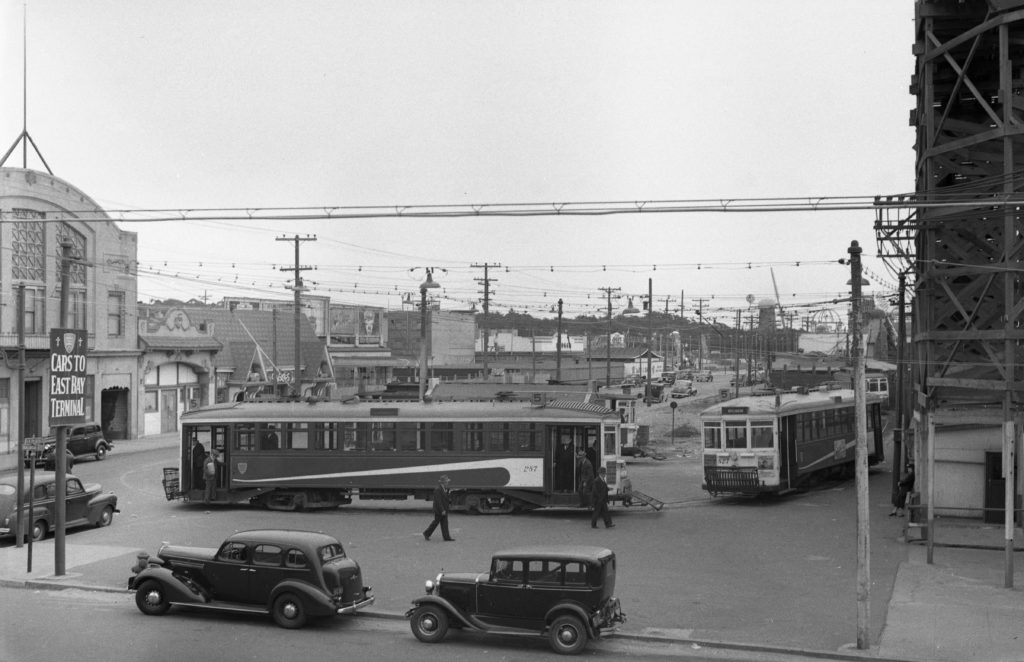
Which streetcar line did she work?
Almost certainly more than one during her five-month tenure, likely including the 7-Haight and 5-McAllister lines at a minimum.
In Caged Bird, she writes, “I clanged and cleared my way down Market Street, with its honky-tonk homes for homeless sailors, past the quiet retreat of Golden Gate Park and along closed undwelled-in-looking dwellings of the Sunset District.” That description fits the then-route of the 7-Haight streetcar, which ran out Market Street to Haight Street through what was later called the Haight-Ashbury District, then jogged south on Stanyan Street and then west all the way out Lincoln Way along the southern edge of Golden Gate Park. It finished the route by running north through the westernmost edge of the park to terminate at LaPlaya and Balboa at Playland-at-the-Beach.
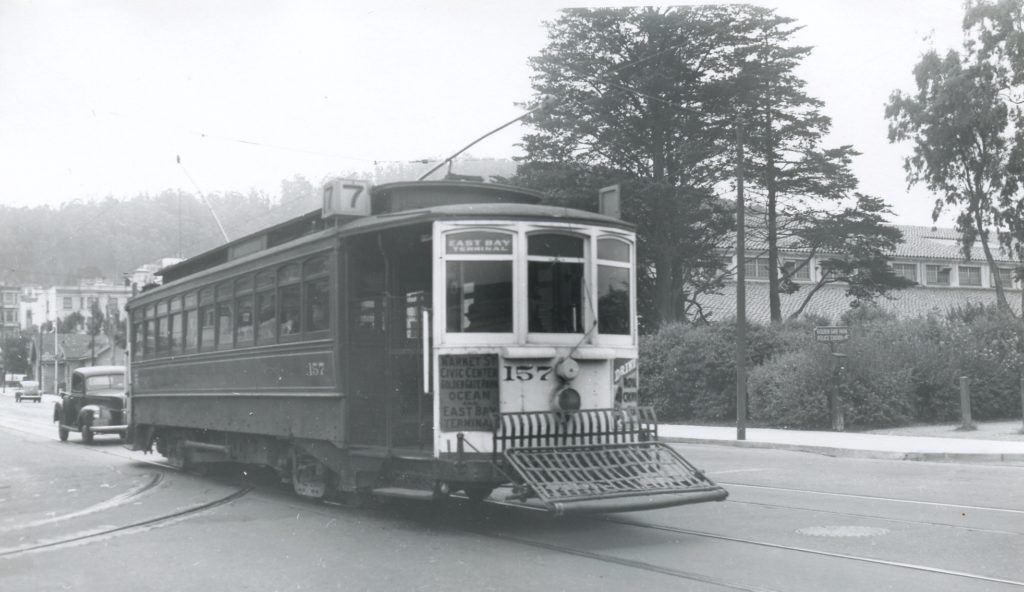
Forty-three years after publication of Caged Bird, in a 2013 interview with Mark DeAnda of Muni’s parent agency, SFMTA, Angelou said she didn’t remember the specific line she worked, but “I do remember that I took the streetcar from out by the beach. I know that we came down McAllister, then down Market Street to the Ferry Building.” Except for the Ferry Building terminal, that describes the 5-line, which ran (and as a trolley bus, still runs) along the northern edge of Golden Gate Park on Fulton Street, through the Richmond District, to share a terminal at Playland with the 7-line. But the 5’s eastern terminal in 1943 was, like the 7-line’s, East Bay Terminal at First and Mission, not the Ferry Building as she remembered in the 2013 SFMTA interview.
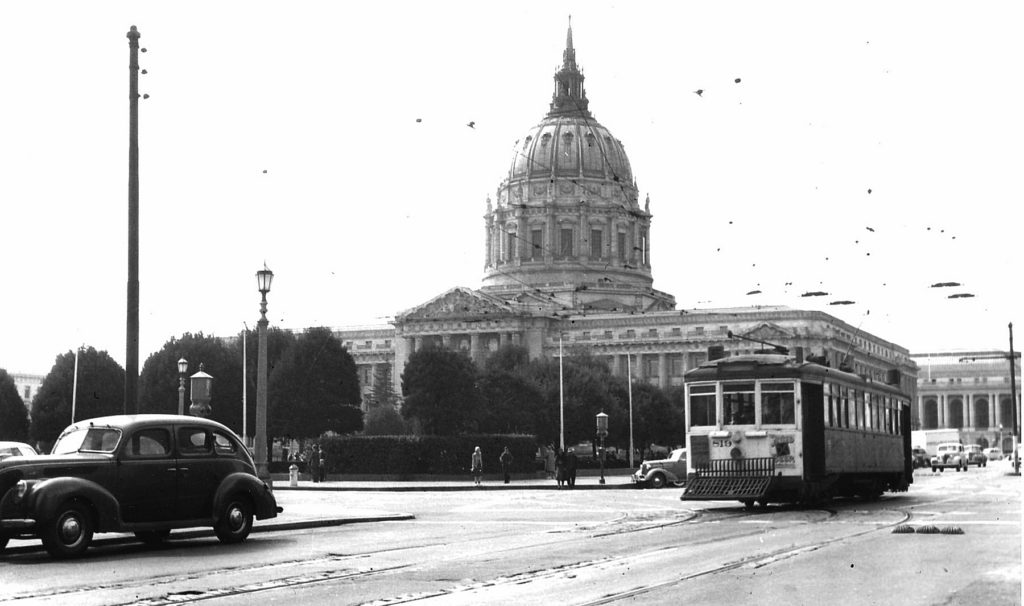
The 7-line shared a carbarn with the 17-line, which duplicated the 7’s route until 20th Avenue, where it turned south, traversing the Sunset District to Stern Grove. But unlike the 7, which terminated at East Bay Terminal, the 17 went all the way to the Ferry Building. Similarly, though the 5-line terminated at East Bay Terminal, the 21-Hayes, with which it shared McAllister Division carbarn, ran all the way to the Ferry. So, when Angelou writes about going all the way to the Ferry Building, she may be referring to trips worked on lines like the 17 and 21.
Another line that ran from the Ferry Building to the Beach (45th Avenue and Geary Blvd.) was the 1-Sutter-California line. Angelou notes in several remembrances that her mother drove her out to “the streetcar barn … out near the beach” to start her pre-dawn split shift, then followed her in the family automobile while she conducted her first trip downtown, to provide a measure of safety and reassurance for her daughter. The 1-line was housed at Sutro Division at 32nd Avenue and Clement Street and was the closest carbarn to the beach.
The next-closest carbarn to the beach was the “Boneyard”, an open-air city block of retired and derelict streetcars at Lincoln Way and 14th Avenue, where some runs originated for the 7 and 17 lines, as well as the 6-Masonic line, which went all the way to the Ferry Building.
Thus, in all likelihood she worked both the 5 and 7 lines, and probably others that reached the Ferry Building in 1943. This mixture of assignments would have been normal for a new-hire.
Retired Muni streetcar operator and Market Street Railway member Larry Bernard says when he joined Muni in 1979, work rules were little changed from decades before. New hires who finished training were assigned to the “extra board” until the next signup, picking up whatever run (streetcar trip) the dispatcher needed filled.
“Since her tenure was only five months, it is unlikely she ever was able to stay on one line for very long,” Bernard writes. “Also, she could have transferred between barns, or been assigned ‘as needed, for the duration,’ as it were. An experience that featured a variety of lines would result in a variety of memories, especially so many years after the fact.”
What types of streetcars did she work on?
The 6, 7, and 17 lines were all served at that time by streetcars numbered from 101-180, bought new in 1911 from the Jewett Car Company of Ohio. None of these 80 cars survives, but dedicated volunteers from our nonprofit have created an exact replica of an end platform of this car type, including the conductor station where Angelou would have stood. It’s a central display in our free museum across from the Ferry Building.
The 5 and 21 lines used somewhat newer streetcars built largely in the 1920s by workers at the main shops of Market Street Railway. Only one of the 250 streetcars of this type survives. Our nonprofit rescued the body from the Mother Lode town of Columbia in 1984, where it had been serving as part of a jewelry store. Muni invested more than $300,000 in rebuilding the body, but the project then stalled. We are working to get the restoration completed soon, naming the car in honor of Maya Angelou, both for her own achievement and those of other women and people of color who broke diversity barriers in San Francisco transit.
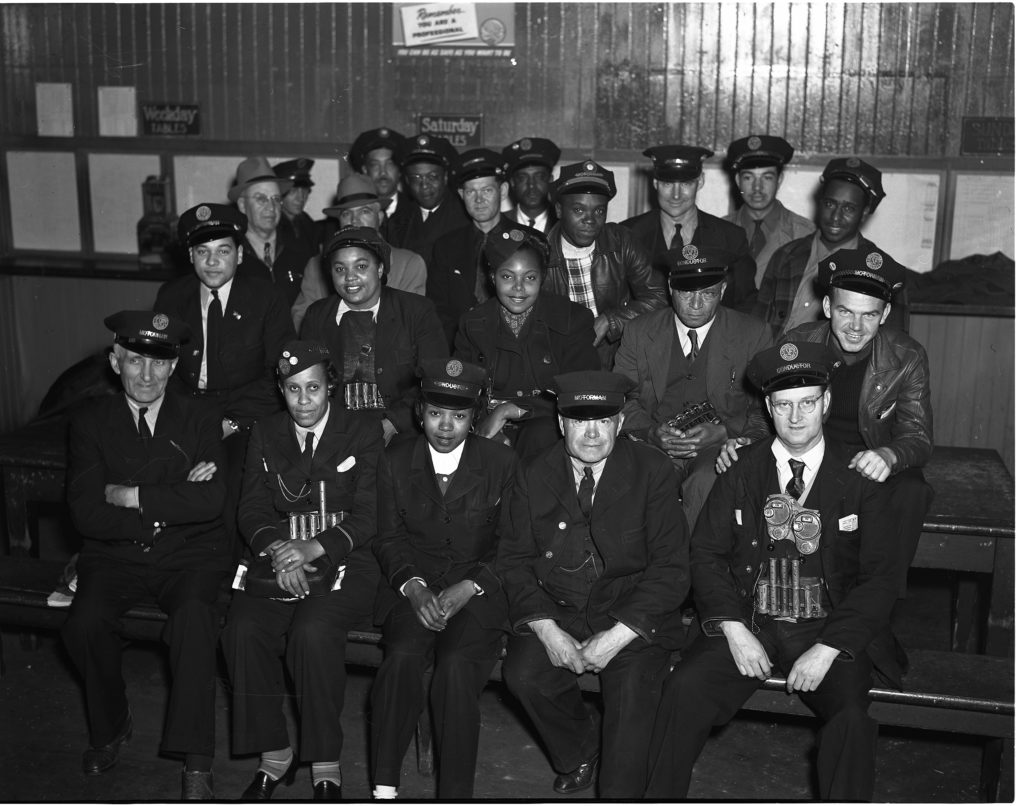
What must it have been like to be in her pioneering role?
Larry Bernard writes, “What I find truly remarkable is her determination, at the age of fifteen (!) to take on a job held almost exclusively by white males, at a time when her appearance on the rear platform of a streetcar, in uniform, requesting fares, could perhaps cause very unpleasant reactions.”
Bernard recalls that years ago, he lived next door to the son of a former Muni streetcar motorman. Bernard’s neighbor told him of the father coming home from work one day during the War, “enraged because they had put a “[N-word] wench on his car as a conductor”. Bernard notes that racists and sexists like that motorman surely existed on the Market Street Railway then too, “and that some of Ms. Angelou’s experience must have been trying, to say the least. Of course, she was an exceptional woman, and, with her indomitable spirit, found much to love about the job. She is truly an inspiration to us all!”
Indeed, in her writings, Angelou focuses on the positives of her five-months on the streetcars. In an interview with Oprah Winfrey, she said after she went back to high school, her mother asked her what she had learned about herself from her experience with the streetcar job. Angelou says she told her mother she didn’t know, and her mother replied, “You learned that you are very strong. with determination and dedication. You can go anywhere in the world.”
And she did.
Our nonprofit depends on donations and memberships to be able to bring stories like this to light, and to celebrate the contributions to historic transit of people like Maya Angelou with meaningful public recognition. Please consider joining us or donating. Thanks.
What an inspiring piece! I had no idea about Maya Angelou’s experience as a streetcar conductor. Her resilience and determination really shine through in this story. It’s fascinating to see how her early life experiences shaped her into the remarkable woman she became. Thank you for sharing this unique part of her history!